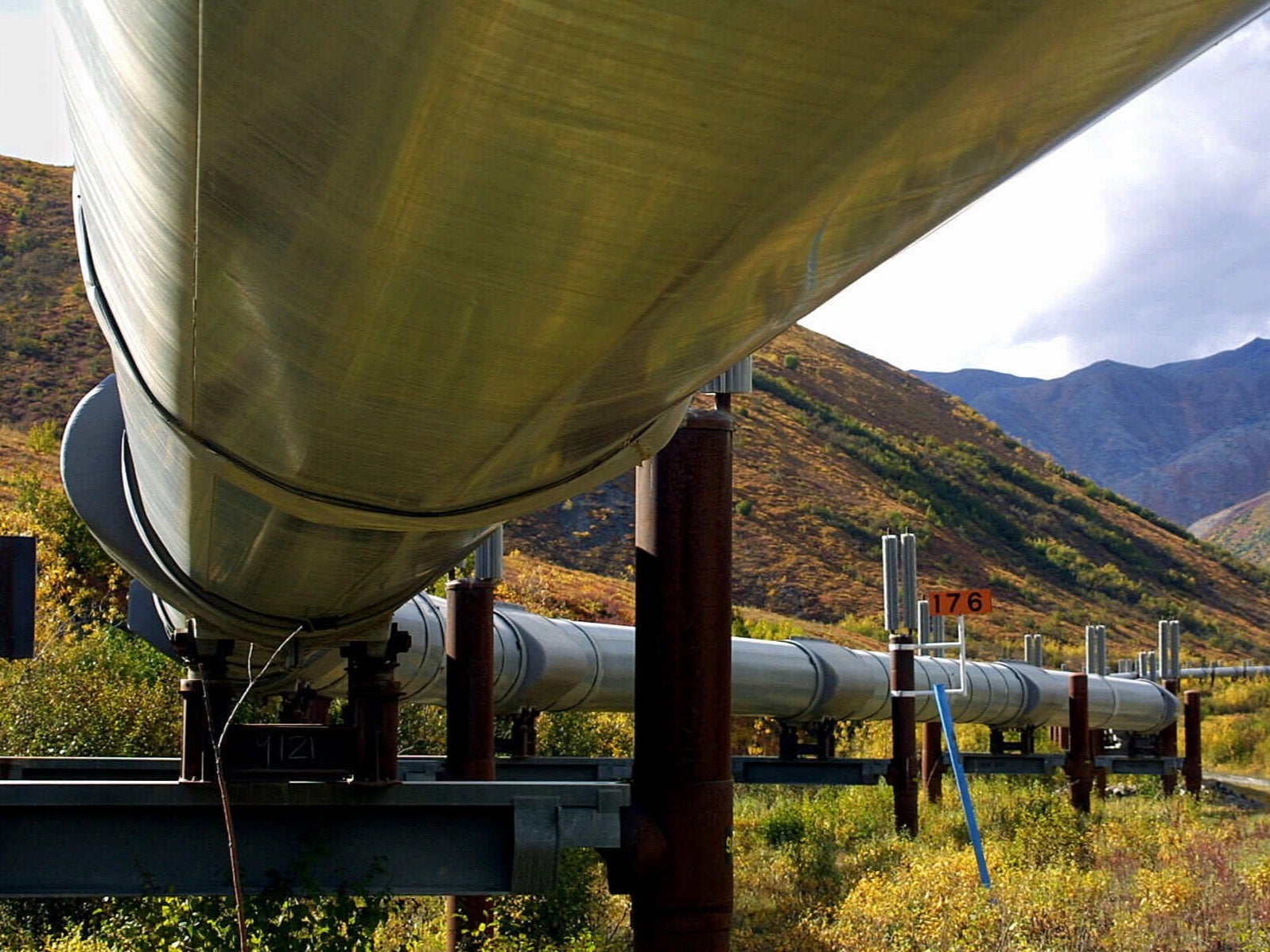Trans-Alaska pipeline in danger of rupturing because of fast-thawing permafrost, experts warn
Warnings of environmental damage as work begins to stabilise 810-foot section

Your support helps us to tell the story
From reproductive rights to climate change to Big Tech, The Independent is on the ground when the story is developing. Whether it's investigating the financials of Elon Musk's pro-Trump PAC or producing our latest documentary, 'The A Word', which shines a light on the American women fighting for reproductive rights, we know how important it is to parse out the facts from the messaging.
At such a critical moment in US history, we need reporters on the ground. Your donation allows us to keep sending journalists to speak to both sides of the story.
The Independent is trusted by Americans across the entire political spectrum. And unlike many other quality news outlets, we choose not to lock Americans out of our reporting and analysis with paywalls. We believe quality journalism should be available to everyone, paid for by those who can afford it.
Your support makes all the difference.The Trans-Alaska Pipeline is in danger of rupturing, experts have warned, as melting permafrost threatens an 810-foot section of pipeline.
Supports holding-up a section are suspected of having shifted or, at worst, twisted, as the thawing of the Alaskan permafrost alters the terrain.
In what appears to be first sign of “slope creep”, experts and officials from the Alaska Department of Natural Resources are expecting further shifting of the Trans-Alaska Pipeline’s supports.
Work to install roughly 100 thermosyphons – tubes that cool the permafrost supporting the Trans-Alaska pipeline – started only last month and will take 120 days to carry out.
As NBC News reported on Sunday, the work was approved by the natural resources department in an attempt at keeping the slope frozen, and to prevent further structural damage.
The installation of the thermosyphons was first proposed in a 2020 report on the oil pipeline, which is among the world’s longest, and opened in 1977.
In recent decades, permafrost temperatures have increased by 3.5F and, according to NBC, are expected to rise further with forecasts of a 4F rise in Alaska’s average temperature by 2050.
Tony Strupulis, the pipeline coordinator for the Alaska Department of Natural Resources, said it remains “very mindful” about the consequences of thawing permafrost on the integrity of the pipeline, which has been responsible for 18 oil spills.
“The design philosophy is, ‘If it’s frozen, keep it frozen,’” he told NBC News.
“If the permafrost thaws, the ground loses its grip on the piling,” added Doug Goering, of the University of Alaska at Fairbanks College of Engineering and Mines. “You can understand the consequences.”
About 124,000 thermosyphons are already in place along the pipeline, which was engineered with an expectation that temperatures would eventually rise — destabilising the permafrost below.





Join our commenting forum
Join thought-provoking conversations, follow other Independent readers and see their replies
Comments